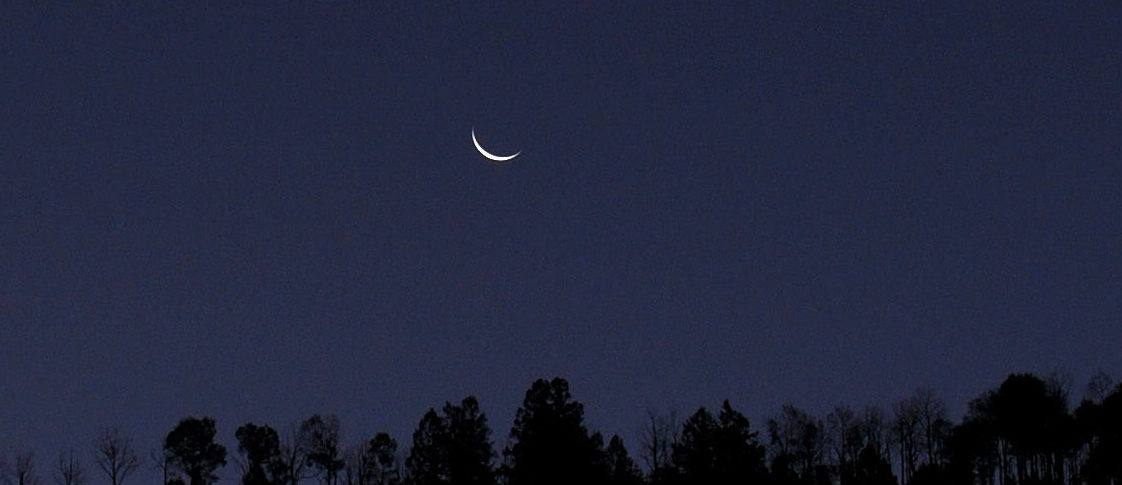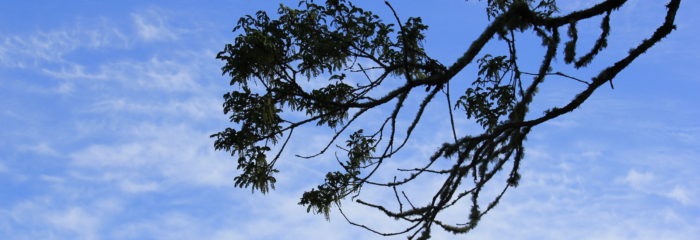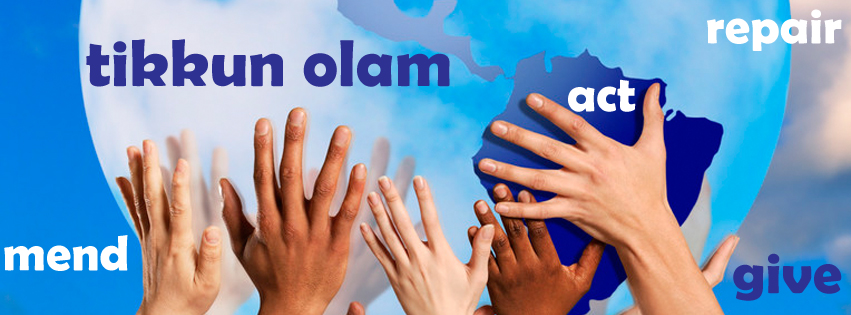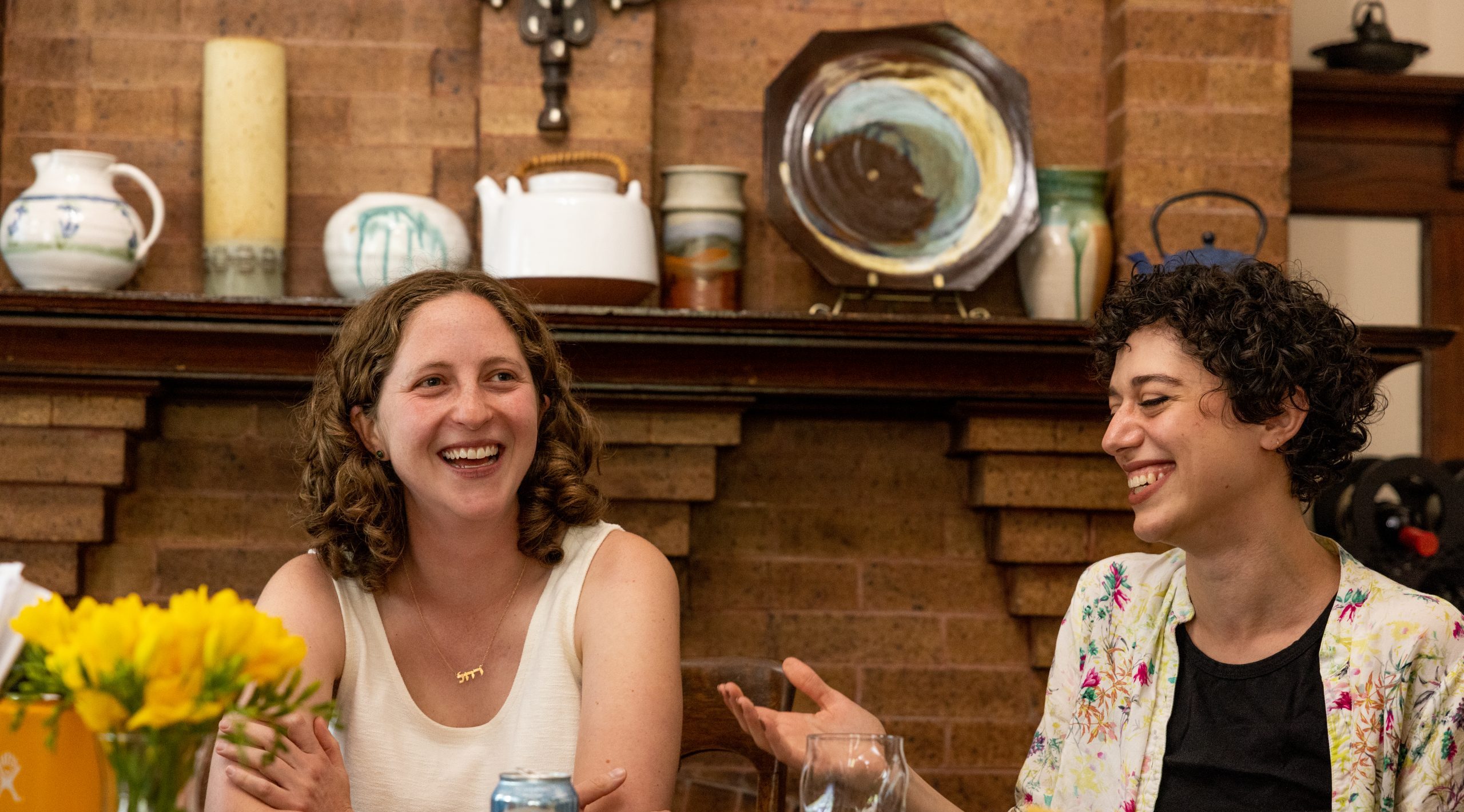Oct 19, 2017 | by Rabbi Lisa Goldstein, Former Executive Director, Institute for Jewish Spirituality
 The other day I got together with a friend who is one of the wise advisors in my life. I told her about a particular issue I was grappling with. She shared a meditation instruction of bringing attention to the sensation of my feet on the floor and really focusing on the way gravity presses the feet down into the support of floor. As I practiced with this instruction, I felt a kind of stability that opened up a clarity that helped me understand what steps to take next.
The other day I got together with a friend who is one of the wise advisors in my life. I told her about a particular issue I was grappling with. She shared a meditation instruction of bringing attention to the sensation of my feet on the floor and really focusing on the way gravity presses the feet down into the support of floor. As I practiced with this instruction, I felt a kind of stability that opened up a clarity that helped me understand what steps to take next.
The very next day I was learning a text from Likkutei Halachot with my study partner. The topic was about how to find eitzot amiti’ot shleimot, wise advice, the kind that can lead you where you really need to go, not just in the short term, but for long term attainment. This book was written by Nachman of Breslov’s beloved disciple, Nathan, and—as is usual for Nachman teachings—there were lots of metaphors for the wise advice that we all seek.
Given my experience the day before, I was astonished to see that one of the metaphors for wise advice was raglayim, the legs and feet! Nathan explains that this is because the legs and feet symbolize the lower levels of a spiritual journey, when we are in the depths and really need that wise advice. That is when we are most receptive to hear the council of true tzadikim and to understand the guidance of the sages who can make the wisdom of Torah alive to us.
These are days when many of us are, in the memorable words of Abraham Joshua Heschel, “praying with our feet.” Sometimes it seems like there isn’t time to do things like meditation or setting aside an hour to learn with my study partner. But this is precisely the time for those practices. They help me pay more attention to the wisdom of my own body and the wisdom of the sages who lived before me. These practices help me see more clearly. They remind me that I am not separate from the rest of the world, and that keeping myself grounded and clear is adding more groundedness and clarity into the world. They help me take better care of other selves that I encounter, in my family, on the subway, as I react to the headlines.
Grounding. Support. Clarity. True advice that brings greater wholeness and opens a door to the next right steps. As we enter into Elul and take true stock of our lives, we hope some of these offerings will help us do just that.
Oct 19, 2017 | by Rabbi Lisa Goldstein, Former Executive Director, Institute for Jewish Spirituality

The morning I wrote this greeting, I woke up very early. We had just concluded the final retreat for our second Clergy Leadership Program cohort and I was heading to the airport to return home for Shabbat. In the eastern sky there was the tiniest sliver of the crescent moon, just rising, heart-breakingly beautiful. It was just a few days before the month of Av began, with that same crescent moon setting in the west.
We are heading towards the end of the Three Weeks, the period between the 17th of Tammuz and the 9th of Av, the season of loss and horror in our mythic history. It is the season of siege, deprivation, enormous suffering, terrible destruction and there are many traditional customs of mourning that mark this season.
In fact, the one thing during this period that continues to be a beacon of joy is Shabbat. It is worth asking, if the world is burning around us, how can we celebrate Shabbat? Shouldn’t we be dedicating ourselves towards fixing this world that is experiencing so much horror? How can we take the time to dedicate to spiritual practice?
One answer to this question comes from a Netivot Shalom teaching about Noah’s Ark that we studied at our retreat. The metaphor is different, but the question is the same: When the flood waters rise up around us, threatening to drown us, how do we survive? What do we do?
The Netivot Shalom suggests that Noah’s ark, that temporary shelter, is actually a hint towards the practice of Shabbat. Shabbat, he teaches, is nothing less than the connection between the heavenly realms and the earthly realms; it is God’s dwelling place on earth. It is a pinah tehorah, a pure little place, where we can take refuge.
I think this offers three insights that are especially important during times of destruction, remembered or present. If Shabbat is the connection between heaven and earth, taking refuge in Shabbat is not about closing ourselves off from the world, but rather about gaining a greater perspective. It is often true that suffering causes our perspective to narrow, which makes it more difficult to make wise decisions. If our practice on Shabbat can help us open back up to the larger picture, we might know how to respond better when we return to facing the world.
Also, when we are closed up in the ark, buffeted by wind and rain, temporarily safe from the destruction around us, we realize that there is a limit to how well we can steer the boat. Parker Palmer teaches that “functional atheism,” acting as if everything depends on us, is a shadow side to leadership. Shabbat reminds us that yes, when havdalah is over, we must go back to acting. But the world depends on more than just our own efforts. Shabbat helps us cultivate this deeper trust.
And finally, Shabbat offers us the inspiration to go back out into the world once the flood waters subside, having experienced a glimpse of that pure little place that the world can be. By rooting us in joy and peace, community and spaciousness, we remind ourselves what we are working towards.
Wishing you a Shabbat shalom, a beacon of joy during this dark time in our spiritual calendar.
Jun 7, 2017 | by Rabbi Lisa Goldstein, Former Executive Director, Institute for Jewish Spirituality

Early this spring, I traveled to California to celebrate my father’s 90th birthday. Members of my extended family from as far away as Fiji and New Zealand came to gather, and I was amazed by the connections I saw between cousins who so rarely have the opportunity to meet in person, the instant bonds of love that we offered—even though we live such different lives!
One of my favorite interactions I witnessed that day was between my father, , and a visiting cousin, who just turned seven. This young boy was telling my father all about the planets and the solar system, which he was learning about in school, and found exciting and fascinating. My father, an astronomer who has been studying the planets since the 1960s, could certainly—in today’s “I know more than you!” world—have brushed this little cousin off. Did he need a little boy to tell him about the retrograde rotation of Venus, or the rings of Saturn, things he himself had discovered? Of course not!
But he did. He listened to this little cousin, as if the way he saw the planets and the stars was the most interesting thing in the whole world to him. And only when he knew that learning from him would bring this cousin even more joy and excitement did he begin to tell him about his own ground-breaking work.
The Psalmist teaches us that the world will be built through chesed (Psalm 89). But what, as we ask in our Tikkun Middot course, is so great about the middah of chesed that it, among all others, will build the worlds?
Chesed is one of the few mitzvot in the Mishnah with no minimum requirement for it to “count.” Rabbi Shlomo Wolbe writes, “A nice word, a smile – these can give new life to someone who has given up on himself! A word of encouragement can bring joy. These are such small things [yet so significant!]”
To build our daily worlds through a lens of lovingkindness is to approach each act we do with a perspective of love. Not to ask: how might I make this moment better? But to ask: How might I relate to this moment—as it already is—with love?
How might I hold myself with love?
I hope the practices enclosed in this month’s letter give you some space to find your own way to build your own world with love.
Apr 24, 2017 | by Rabbi Lisa Goldstein, Former Executive Director, Institute for Jewish Spirituality

The truth is that telling the truth is not so easy. The sages of the midrash wryly told that when God decided to create human beings, the ministering angels broke into factions. Justice and Lovingkindness were in favor of this new creation, saying that people would do acts of tzedek and chesed. Peace objected that they would engage in war and Truth protested that humans would be filled with deceit. God’s response was to hurl Truth down to the earth, but the other angels rushed to its defense. “Is not Truth Your seal?” they said. And quoting Psalm 85, they added, “Let truth spring up from the earth!”
In this rabbinic take on human nature, Truth, of course, tells the truth that human beings have a hard time living truthfully. But I find the end of the midrash ambiguous. Did Truth return to the heavenly abode? Or did it remain among us to instruct and inspire us? What makes it so difficult to tell the truth?
I consider times I have knowingly lied and most of them arose from an attempt to save face. The greater damage to others, however, came from the times I lied almost unknowingly because I had not told the truth to myself. In those cases, the truth was too painful for me to face. I remember certain situations in which the truth sprang up in me as a clear voice, but I didn’t want to hear it and I looked away. I pretended I did not know and somehow I did not know. The lies I told then were the most harmful because I believed them myself.
How can we get better at telling the truth? One practice emerges from the mystical tradition, in which truth is the balancing point between the endless flow of loving kindness and the firm rigor of judgement. Truth is not the opposite of kindness; instead, it can be found by holding kindness and judgment at the same time. Sometimes an insight, an unpleasant judgment arises. If I am cultivating the habit of bringing loving kindness towards my experience, I have more space to notice: Oh, here is fear. Here is aversion. Here is the unbearable. And yes, here is truth, the truth I did not want to welcome, but which has come nevertheless.
What is true in our personal lives is also true on larger scales. In our national life, truth is under attack from many sides and yet, there are also some truths about our country that have come to the surface that have long been too uncomfortable for many of us to face. I hope that the practices in this newsletter can help us turn towards these truths with courage and compassion.

May 1, 2013 | by Rabbi Lisa Goldstein, Former Executive Director, Institute for Jewish Spirituality

Recently, I had the opportunity to test out a pet theory of mine and to see if it held any water. I was excited and nervous: what if this whole idea just sounded nice in my head but didn’t have any traction on the ground?
For the past three years or so, I have been interested in the juxtaposition of justice work and contemplative practices. I had been leading a variety of service-learning trips, mostly with college students in the Global South, and also doing local volunteer work, helping a family of refugees from Burma start to make a new life for themselves in the US. I had also been teaching meditation. I wondered: could there be a connection between these two worlds?
Perhaps combining social justice with contemplative practice could help make sure that meditation and prayer and learning don’t turn into self-indulgent, self-satisfied activities that are only about personal fulfillment. And perhaps bringing contemplative practices to justice work could help ensure that activism is more creative, more sustainable and more grounded in the values it endeavors to hold.
At our Jewish Meditation Teacher Training retreat in November, I had the first opportunity to share some of my ideas and I was pleased with the positive reception. But in some ways, I felt like I was preaching to the proverbial choir. Many of the participants in the program are already involved in various forms of social change and all of them have a strong meditation practice. All I had to do was connect the dots.
But this winter I had the opportunity to be the scholar in residence for Repair the World’s Fellow program. This training was for twelve outstanding professionals who are leading service learning programs across the country. They came to the training without any a priori interest in contemplative practices. They were looking for tools to be more effective teachers, activists and organizers.
To my great delight, they got it right away. They understood that, in the words of Paul Auster, “the inner and the outer could not be separated except by doing great damage to the truth.” Paying attention to our inner lives – to what is difficult, to our own inner shadow, to the process of reflection – is the same thing as paying attention to the areas that need fixing out in the world, just on a different level. And bringing a loving, gentle awareness to the areas of brokenness, both inner and outer, can open possibilities of healing and transformation in beautiful and surprising ways.
This is just the beginning. Stay tuned for more…
 The other day I got together with a friend who is one of the wise advisors in my life. I told her about a particular issue I was grappling with. She shared a meditation instruction of bringing attention to the sensation of my feet on the floor and really focusing on the way gravity presses the feet down into the support of floor. As I practiced with this instruction, I felt a kind of stability that opened up a clarity that helped me understand what steps to take next.
The other day I got together with a friend who is one of the wise advisors in my life. I told her about a particular issue I was grappling with. She shared a meditation instruction of bringing attention to the sensation of my feet on the floor and really focusing on the way gravity presses the feet down into the support of floor. As I practiced with this instruction, I felt a kind of stability that opened up a clarity that helped me understand what steps to take next.





